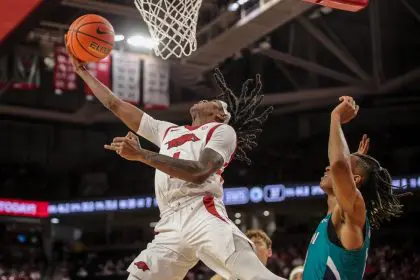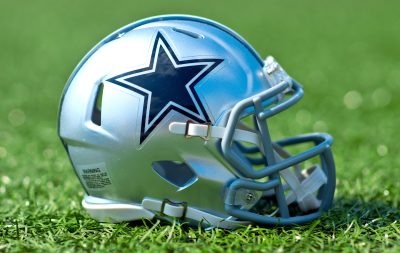The 2025 NFL Draft created immediate buzz beyond the selections themselves when NFL Commissioner Roger Goodell pedaled his way to the main stage on a bicycle, setting an unconventional tone for the Green Bay, Wis., event. This theatrical entrance preceded substantial team-building decisions as franchises except for the Houston Texans and Los Angeles Rams participated in first-round selections focused on addressing immediate roster needs.
The annual talent distribution represents both opportunity and risk, with some organizations likely to celebrate their acquisition decisions while others may eventually question their evaluation process. Early analysis suggests several standout selections positioned to deliver immediate contributions during their rookie campaigns.
The quarterback landscape transformation
The Tennessee Titans secured the draft’s most consequential position by selecting Cam Ward with the first overall pick, immediately installing him as their starting quarterback. His physical attributes present an impressive foundation for development, combining ideal size with exceptional athleticism and arm strength capabilities that project well to the professional level.
The transition from college to professional quarterbacking represents one of sports’ most challenging developmental paths. Ward must refine both mechanical consistency and decision-making processes to maximize his considerable physical gifts. The Titans organization has positioned their entire competitive timeline around his development curve.
This selection follows the league-wide pattern of desperate quarterback acquisition, with organizations willing to invest premium draft capital in prospects with franchise-altering potential. The success or failure of this selection will likely define the Titans’ competitive fortunes for the next half-decade.
9 rookies positioned for immediate impact
Ward’s physical tools — including size, mobility and throwing power — create a promising developmental foundation despite needed refinements in processing speed and mechanical consistency.
Travis Hunter brings unprecedented two-way potential to the Jacksonville Jaguars with expected significant playing time at both receiver and cornerback positions. His exceptional speed and natural ball skills project to create highlight moments early in his professional career while the organization determines his optimal long-term positional fit.
Abdul Carter joins the New York Giants defensive front with exceptional pass rush potential after recording 12 sacks in his final collegiate season at Penn State. While rookie edge defenders historically face adjustment periods, his quickness and versatility should benefit from playing alongside established defensive line talent that will prevent offenses from focusing blocking resources exclusively on him.
Ashton Jeanty continues the trend of premium running back selections, becoming just the sixth ball carrier drafted in the top 10 over the past decade. He joins accomplished predecessors, including Ezekiel Elliott and Saquon Barkley, who delivered immediate production. His advanced vision and balance suggest realistic potential to exceed 1,000 scrimmage yards during his initial campaign.
Tetairoa McMillan arrives in Carolina with quarterback endorsement as Bryce Young specifically advocated for this selection. His contested catch ability and route precision position him to potentially lead the Panthers in receiving production immediately despite the typical adjustment period rookie receivers face transitioning to NFL coverage schemes.
Tyler Warren addresses a critical production void for Indianapolis after Colts tight ends finished last in both receptions and receiving yards during the previous season. His physical playing style and positional versatility should make him an immediate contributor within the offense regardless of whether Anthony Richardson or Daniel Jones secures the starting quarterback position.
Jalon Walker provides defensive flexibility to Atlanta at the 15th selection with athletic traits that enable multiple positional alignments. The Falcons targeted front seven improvement throughout their offseason acquisition strategy, with Walker representing a centerpiece investment toward addressing this roster deficiency.
Jahdae Barron projects as an immediate starter in Denver’s secondary, joining a defensive unit that already demonstrated strength in the previous season. His ball skills and physical coverage style should complement a defense that ranked among league leaders in takeaways, potentially elevating an already effective unit.
Malaki Starks brings positional versatility to Baltimore’s secondary after his selection at pick 27. His experience and diverse skill set create strategic flexibility when paired with established defensive back talent including two-time All-Pro safety Kyle Hamilton in the Ravens defensive backfield.
The running back valuation debate continues
The selection of Jeanty in the draft’s top 10 picks highlights the ongoing philosophical debate regarding running back valuation in the modern NFL. While analytics-focused perspectives frequently question investing premium draft capital at this position, exceptional talents continue earning early-round consideration despite league-wide trends toward committee backfields.
Jeanty joins a small group of running backs selected with top-10 picks over the past decade including Elliott, Leonard Fournette, Christian McCaffrey, Barkley and Bijan Robinson. The production outcomes from this group have varied significantly, with some justifying their draft position through immediate impact while others struggled to deliver consistent value.
The evaluation of this selection will ultimately depend on Jeanty’s productivity relative to running backs available in later rounds. His vision, contact balance and receiving abilities suggest potential for immediate contribution, particularly if his blocking development accelerates during his rookie season.
Receiver development timelines
The Panthers’ selection of McMillan reflects organizational confidence in accelerating the typical developmental curve for rookie wide receivers. While first-year receivers historically face adjustment periods learning route precision against professional coverage schemes, McMillan arrives with technical refinement that suggests potential for immediate production.
McMillan’s contested catch skills address a specific need within the Panthers’ receiver group, potentially creating a complementary skill set alongside existing personnel. His development represents a critical factor in evaluating Young’s progress in his own developmental timeline.
Defensive impact expectations
The 2025 draft class features several defensive prospects with traits suggesting immediate impact potential, challenging the conventional wisdom that rookie defenders typically require adjustment periods. Carter, Walker, Barron and Starks each possess characteristics that might accelerate their transition to professional competition.
Carter’s pass rush productivity during his collegiate career positions him favorably among edge prospects, particularly given the supporting talent along the Giants defensive front. His ability to convert athletic traits into consistent quarterback pressure will determine his rookie impact level.
Walker provides Atlanta with scheme versatility through positional flexibility that modern defensive coordinators increasingly value. His diverse skill set enables creative deployment within defensive structures, potentially creating matchup advantages against opposing offenses.
The Broncos and Ravens selections of Barron and Starks, respectively, represent additions to already established defensive units. This context might facilitate easier transitions as these rookies can fill specific roles without bearing complete responsibility for defensive performance improvement.
Draft success measurement
The evaluation of draft selections ultimately requires significant time beyond initial analysis, with player development trajectories frequently defying immediate projections. While physical traits and collegiate production create evaluation foundations, factors including scheme fit, coaching stability and organizational infrastructure significantly influence rookie success rates.
Teams achieving alignment between prospect traits and specific role requirements typically maximize return on draft investments. The selections highlighted represent situations where prospect strengths appear well-matched with organizational needs, creating favorable conditions for immediate contribution.
The coming months will reveal which rookies successfully navigate the substantial transition to professional competition. As teams progress through offseason programs toward training camp, these young players face the challenge of translating potential into production against elite competition.













